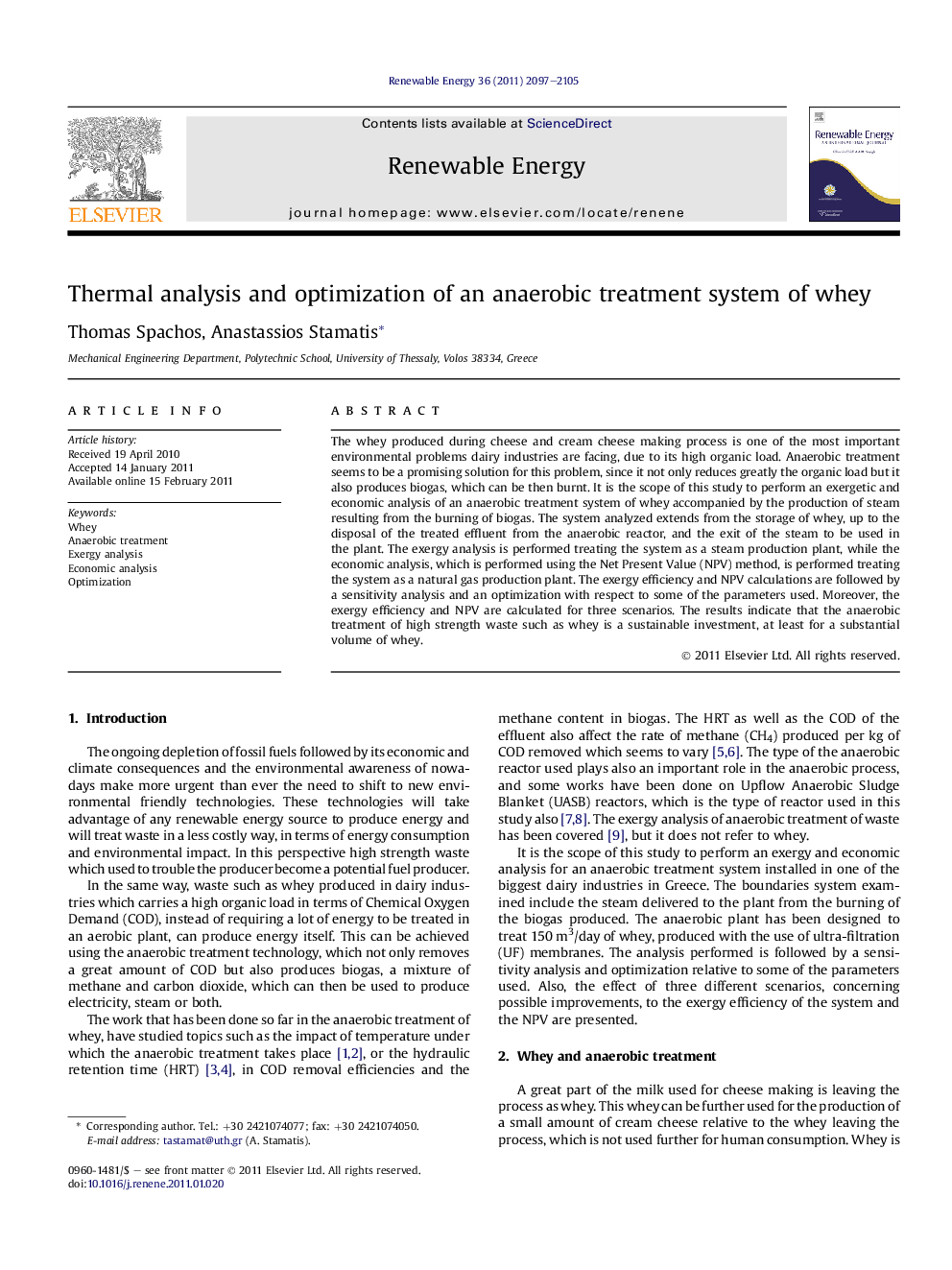| Article ID | Journal | Published Year | Pages | File Type |
|---|---|---|---|---|
| 301426 | Renewable Energy | 2011 | 9 Pages |
The whey produced during cheese and cream cheese making process is one of the most important environmental problems dairy industries are facing, due to its high organic load. Anaerobic treatment seems to be a promising solution for this problem, since it not only reduces greatly the organic load but it also produces biogas, which can be then burnt. It is the scope of this study to perform an exergetic and economic analysis of an anaerobic treatment system of whey accompanied by the production of steam resulting from the burning of biogas. The system analyzed extends from the storage of whey, up to the disposal of the treated effluent from the anaerobic reactor, and the exit of the steam to be used in the plant. The exergy analysis is performed treating the system as a steam production plant, while the economic analysis, which is performed using the Net Present Value (NPV) method, is performed treating the system as a natural gas production plant. The exergy efficiency and NPV calculations are followed by a sensitivity analysis and an optimization with respect to some of the parameters used. Moreover, the exergy efficiency and NPV are calculated for three scenarios. The results indicate that the anaerobic treatment of high strength waste such as whey is a sustainable investment, at least for a substantial volume of whey.
Research highlights► Exergy and economic analysis of an anaerobic treatment system of whey is performed. ► It results as a sustainable investment, at least for a substantial volume of whey. ► Sensitivity analysis defines optimal system operation. ► Suggested improvements would increase exergy efficiency by 8% and NPV by 93%.
